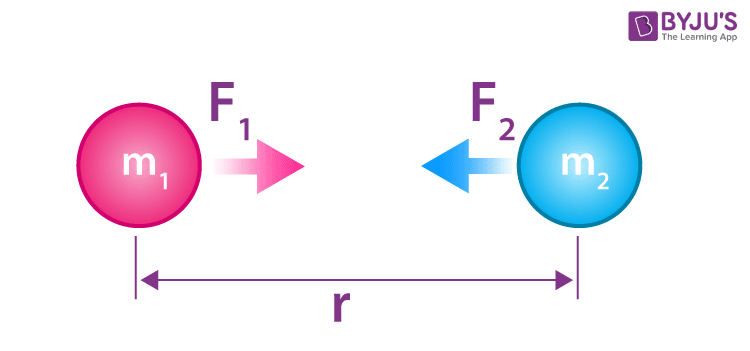Gravitation - Gravitational Force and Newton's Law of Gravitation

Gravitation or gravity is the force of attraction between any two bodies. All the objects in the universe attract each other with a certain amount of force, but in most cases, the force is too weak to be observed due to the very large distance of separation. Besides, gravity’s range is infinite, but the effect becomes weaker as objects move away. This force of attraction was first observed by Sir Isaac Newton and was presented as Newton’s law of gravitation in the year 1680. However, gravitation can generally exist in two main instances. 1. Gravitation may be the attraction of objects by the earth For example, If a body (ball) is thrown upwards, it reaches a certain height and falls downwards because of the gravity of the earth. 2. Gravitation may be the attraction of objects in outer space. For example, The force of attraction between the other planets and the sun.
Newton’s Law of Gravitation
According to Newton’s law of gravitation, every particle in the universe attracts every other particle with a force whose magnitude is, Directly proportional to the product of their masses, i.e., F ∝ (M1M2) . . . . (1) Inversely proportional to the square of the distance between their centre, i.e., (F ∝ 1/r2) . . . . (2) On combining equations (1) and (2), we get, F ∝ M1M2/r2 F = G × [M1M2]/r2 . . . . (7) Or, f(r) = GM1M2/r2 [f(r) is a variable, non-contact, and conservative force] As f(r) varies inversely as a square of ‘r,’ it is also known as the inverse square law force. The proportionality constant (G) in the above equation is known as the gravitational constant.
For more information Wikipedia